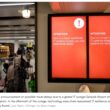New and old radio technologies have roles in homeland security
At the 2005 Homeland Security & Global Security Summit in Washington, D.C., this week, leading-edge ultrawideband (UWB) radio technology was side-by-side next to old-fashioned, but still critical, radio gear, specifically antennas. While UWB is one of the latest high-tech twists in the war on terrorism, there’s a healthy demand for low-tech antennas that trace their linage back to the days of Marconi.
Pulse~LINK, a start-up based in San Diego, Calif., demonstrated the ability for their UWB technology to send multiple simultaneous video streams in a secure fashion. “Pulse~LINK is not aiming for the wireless USB market, but the video market,” said Bruce Watkins, Pulse~LINK’s President. “We’ve got a much more secure and faster solution than Wi-Fi.” Watkins had a spectrum analyzer operating in the booth and used it to point out the operation of Wi-Fi networks in the 2.4 GHz band on the show floor, as well as random RF noise from other devices. Not wishing to be named, a security analyst unassociated with the company at a nearby booth had identified five unsecured Wi-Fi networks on the show floor. “They have the only secure network here,” said the analyst.
The demonstration network consisted of four nodes, each one constructed from the company’s evaluation kit hardware and set up in a small “pico-net” LAN. A mixture of pre-recorded and real-time video were broadcast around the company’s 20-foot-by-20-foot booth. Currently existing in bulky “brassboard” form requiring a double-height PC enclosure to hold a large PCI card, the technology is in the process of being streamlined and put into final form in a silicon chip set for incorporation into useable devices. Watkins said the chip set should be sampling in May or June of 2005 with “commercially available” silicon available in the first quarter of 2006. Currently capable of delivering around 1 Gb/s data rates, Watkins indicated that further improvements to the basic technology could easily double performance in the future.
Watkins envisions the technology being used in applications where video needs to be transmitted from cameras to first responders and security personnel on laptops and even portable devices like PDAs and cell phones. “You could have a portable TiVo,” Watkins said. “People would get the video downloaded [to their device], rewind it, focus on suspicious activity. It’s an application you just can’t do with existing [wireless] technology.” Existing Wi-Fi networks don’t have the bandwidth, he said, and it’s more difficult to operate a secure application on a public network. Pulse~LINK’s proprietary C-Wave™ technology implementation for public safety use will be different from consumer applications, and therefore more secure.
Around the corner from Pulse~LINK, CSA Wireless representative Bill Whittington was grinning from ear to ear as he talked about the booming demand for the company’s HF antennas. “With one of our antennas you can reach anywhere in the 48 states,” said Whittington. “Everyone had gotten out of the HF antenna business, so it’s the only reason why you’ll see [CSA] here. Who’s going to do further R&D on a 1908 product?” CSA Wireless got into the business in the early 1900s when Marconi turned to the ship-mast company for something to string his antennas on and started dedicated manufacture of antennas during World War II.
Whittington said most people and agencies considered HF “a black art,” but computerized radios and the events of 9/11 had brought new life into use of the 2 to 30 MHz bands. “You can have someone set up a radio to communicate over HF, allowing for factors such as time of day and what bands aren’t usable. Once it’s set up, anyone can simply turn it on and get dial tone.” In preparation for potential Y2K “bug” problems, all state National Guard units setup an HF communications network. While there were no Y2K communications problems, the HF network was already built. After the 9/11 attacks, the National Guard Association in Washington D.C. used their HF equipment to communicate with personnel in New York City.
Today, the U.S. Department of Homeland Security is a major buyer of HF equipment and has the ability to tie into the National Guard HF radio network in case of a major communications breakdown due to terrorist attack or disaster. Whittington currently has an HF antenna on loan to a Coast Guard station in Alaska operating rescue helicopters. “You can’t believe the conditions these guys fly in. They get into the mountains and gullies, and without HF they can’t communicate. They didn’t have HF, but they need it today. I’m happy to loan them an antenna and I don’t doubt they’ll come up with a purchase order.”
Whittington, a former Army Ranger, said the U.S. military is one of his biggest customers and he had testimonial letters praising CSA’s antennas from the Army, Navy, and Marine Corps dating back to 1985. “HF gives them huge reach,” he said. “I send e-mail to a special forces technician in Zimbabwe, Africa, through an HF link run out of Fort Bragg.”

















